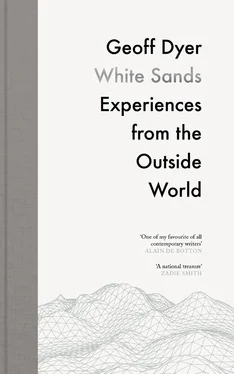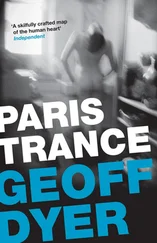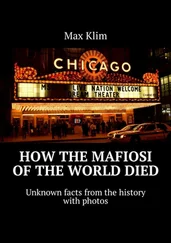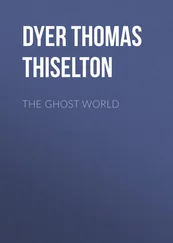Geoff Dyer
White Sands: Experiences from the Outside World
The point of going somewhere like the Napo River in Ecuador is not to see the most spectacular anything. It is simply to see what is there. We are here on the planet only once, and might as well get a feel for the place.
— Annie Dillard
There remained the inexplicable mass of rock. The legend tried to explain the inexplicable. As it came out of a substratum of truth it had in turn to end in the inexplicable.
— Franz Kafka
Like my earlier blockbuster, Yoga for People Who Can’t Be Bothered To Do It, this book is a mixture of fiction and non-fiction. What’s the difference? Well, in fiction stuff can be made up or altered. My wife, for example, is called Rebecca whereas in these pages the narrator’s wife is called Jessica. So that’s it really. You call yourself the narrator and change the names. But Jessica is there in the non-fiction too. The main point is that the book does not demand to be read according to how far from a presumed dividing line — a line separating certain forms and the expectations they engender — it is assumed to stand. In this regard ‘White Sands’ is both the figure at the centre of the carpet and a blank space on the map.
— GD, California, September 2015

Next to my primary and junior schools, in the small town where I grew up (Cheltenham, Gloucestershire) was a large recreation park. During term time we played there at lunchtimes; in the summer holidays, we spent whole afternoons playing football. At one corner of the rec was something we called the Hump: a hump of compacted dirt with trees growing out of it — all that was left, presumably, of the land that had been cleared and flattened to form the rec; either that or — unlikely given the size of the trees — a place where some of the detritus from this process had been heaped up. The Hump was the focal point of all games except football and cricket. It was the first place in my personal landscape that had special significance. It was the place we made for during all sorts of games: the fortress to be stormed, the beachhead to be established (all games, back then, were war games). It was more than what it was, more than what it was called. If we had decided to take peyote or set fire to one of our schoolmates, this is where we would have done it.
Where? What? Where?
In the course of changing planes at LAX, in the midst of the double long-haul from London to French Polynesia, where I was travelling to write about Gauguin and the lure of the exotic in commemoration of the centenary of his death, I lost my most important source of information and reference: David Sweetman’s biography of the artist. The panic into which I was plunged by this ill-omened, irreparable and inexplicable loss gradually subsided, giving way to a mood of humid resignation that threatened to dampen the entire trip. Robbed of this essential work — and sometimes loss is a form of robbery, even when it is purely the fault of the loser — I spent much of my free time in Tahiti trying to make good that loss, writing down what I remembered of Gauguin’s life and work from my reading of Sweetman and other art-historical sources.
Gauguin was nothing if not a character, I wrote, but he was an artist first and foremost. His life was every bit as colourful as his paintings, which influenced all the artists who came after him, including the great colourist Matisse, who was inspired to travel to Tahiti ‘to see its light,’ to see if the colours in Gauguin’s paintings were for real (they were and weren’t). Gauguin was born in Paris in 1848 but thought of himself as ‘a savage from Peru,’ where he had spent his early childhood. The fact that he was a savage did not prevent him becoming a stockbroker with a wife and family he left behind when he went to Tahiti. Part of the reason for going to Tahiti was to get in touch with his savage roots and shuffle off the veneer of civilization while being able to enjoy all the perks of a French protectorate. The name gives away the colonial game: in classic gangster style, the French offered protection in the full knowledge that what the Tahitians needed protection from was the French. Before Gauguin went to Tahiti he lived for a while in Arles with the tormented genius Vincent van Gogh, and they pretty well drove each other nuts, but of the two Gauguin drove Van Gogh more nuts than Van Gogh drove him nuts, but that is not saying much, because Van Gogh was so highly strung he had it in him to go nuts anyway, was partially nuts even before he went totally nuts. The inherently volatile situation of two artists — as immortalised by Kirk Douglas and Anthony Quinn — living in such close proximity was not helped by their always getting loaded on absinthe, and although it took everyone by surprise it was probably no surprise when Van Gogh cut off his ear to spite his face. Another problem was that Gauguin was a real egotist. He really had a big ego and he was always having to prove himself and eventually he decided that the only way to prove himself was to go to Tahiti to live among savages, of whom he liked to think he was one. He was forty-three when he got there.
La vai taamu noa to outou hatua
‘Where do you come from?’ asked the immigration official at Papeete. ‘Where are you going?’ Had he been briefed to ask these questions — the questions posed by Gauguin in his epic painting of 1897, the questions I had come to Tahiti to answer — as part of the centenary celebrations?
When Gauguin waded ashore in 1891, the local women had all gathered round to laugh at this proto-hippie with his Buffalo Bill hat and shoulder-length hair. When I passed through immigration, they were not laughing but smiling sweetly in the humid, pre-dawn darkness, and they welcomed me and the other tourists with necklaces of flowers that smelled as fresh as they had on the first day of creation. It is always nice to be greeted with a necklace of sweet-smelling tropical flowers but, at the same time, there is often something soul-destroying about it. A lovely tradition of welcome had been so thoroughly commodified and packaged that even though the flowers were fresh and wild and lovely they might as well have been plastic. There was also something soul-sapping about the men driving the tour buses, waiting to ‘transfer’ the tourists to the barbaric luxury of their hotels: built like prop-forwards, biologically programmed to crush the English at rugby, they were reduced to the role of super-polite baggage handlers.
By the time I checked into my deluxe room it was getting light in that prompt tropical way, so I threw open the French windows, stepped out on to the balcony and took in the pristine view. The dream island of Moorea was backdropped against the half-awake sky. It was a magnificent view as long as you didn’t turn your head to the right and see the other balconies geometrically gawping and Gurskying out to sea. I was in a huge and luxurious hotel, and even though the view was fantastic the ocean itself seemed manicured, as if it were actually part of an aquatic golf course to which hotel guests enjoyed exclusive access.
Before everything went pear-shaped between them, Gauguin and Van Gogh had a plan to set up ‘the Studio of the Tropics’ in Tahiti. These days Papeete, the capital, looks like the kind of place Eric Rohmer might have come if he’d decided to make a film in the tropics: a film where nothing happens, set in a place that resembles a small town in France where you would never dream of taking a holiday, which exists primarily in order to make other places seem alluring — especially if you have the misfortune to arrive on a Sunday, when everywhere is shut. There’s not much to see anyway, and on Sunday ‘not much’ becomes nothing. It would have been wonderful to be here at the tail end of the nineteenth century, when Gauguin first arrived — or so we think. But Gauguin himself arrived too late. By the time he got here it was ‘notorious among all the South Sea Islands as the one most wretchedly debased by “Civilization”’: an emblem, I remembered some art historian writing, ‘of paradise and of paradise lost.’ Only in Gauguin’s art would it become paradise regained and reinvented.
Читать дальше













